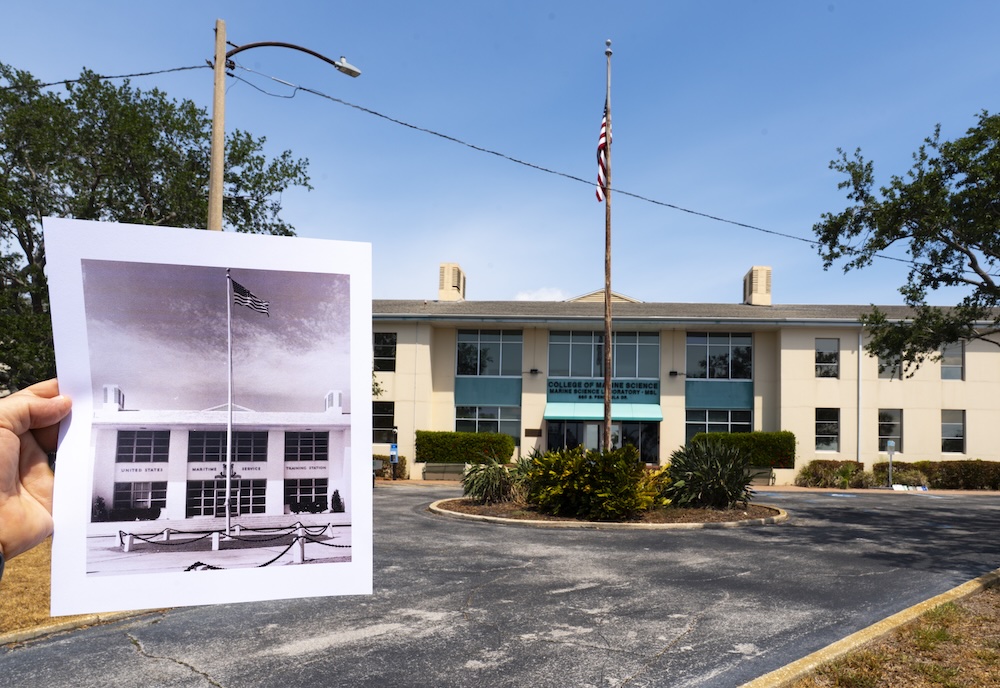By Matthew Cimitile, University Communications and Marketing
Perched near the bay on the southeastern end of the USF St. Petersburg campus sits a monument dedicated to the U.S. Maritime Service Training Station. The memorial pays homage to the facility that once stood on these grounds and the 25,000 merchant marines who trained here, many of them serving during World War II.
Eighty years after the war ended in Europe on May 8, 1945, also known as VE Day, and 75 years after the station was decommissioned, aspects of the training station still exist on campus today.
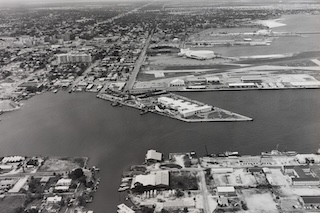
Aerial view of the Maritime Service Training Station in St. Petersburg.
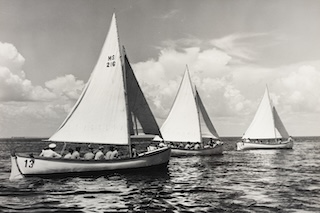
Instruction at the facility included learning how to sail.
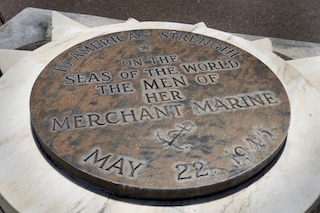
Monument dedicated to the merchant marines.
St. Petersburg was chosen as one of the sites to host a U.S. Maritime Service Training Station because of its location on the water, comfortable year-round weather and proximity to a U.S. Coast Guard base, the entity responsible for overseeing the training of merchant marines, according to a history of the facility by author Michelle Hoffman.
Opened in 1939, the training station educated recruits who came from across the nation. They would go on to provide critical logistical and transportation support for military operations during World War II.
The defining feature of the station’s grounds was the barracks, a two-story, T-shaped compound. This concrete building, which could house 800 men, included dormitories and staff quarters, mess halls, a library and administrative offices, Hoffman wrote.
Still existing today, the barracks are now laboratories for the USF College of Marine Science, the site of research into seafloor mapping, fisheries, red tide, storm surge modeling and more.
One group in particular, the Center for Maritime and Port Studies, maintains deep ties to the regional maritime community and carries on the tradition of the merchant marines that once resided in the building. The center provides workforce development, research and testing of new technologies to assure safety in the maritime industry and has recently led efforts to refurbish the monument dedicated to the U.S. Maritime Service Training Station.
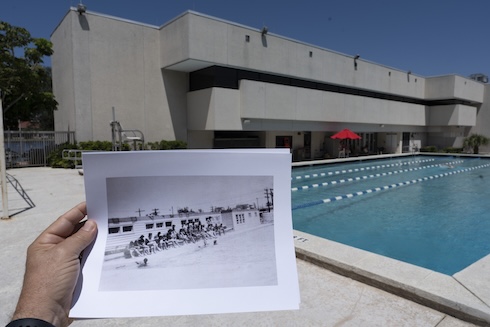
USF St. Petersburg's pool facility, then and now.
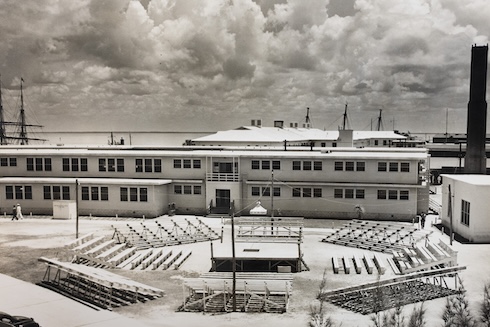
Boxing ring was built behind the barracks.
The training grounds also included a boxing ring, an auditorium to watch films, a machine shop, an infirmary and a swimming pool.
The Olympic-size pool was installed to ensure that trainees knew how to swim and were able to perform a variety of procedures, including entering a boat from the water and hauling a man into the boat without tipping over. Trainees spent considerable time treading water for long durations.
The pool, still in operation, is now used for campus pool parties, summer camp activities and remotely operated vehicle competitions.
Instruction at the facility included seamanship, sailing, knot making, commanding a lifeboat, first aid and firefighting. Recruits would also learn how to repair ripped canvas on ships and clean decks.
After two months of mostly training on land, recruits would then transfer to ships. Aboard vessels such as the 410-foot-long American Seaman, they would learn how to navigate at sea, identify ships and planes from afar, and use a gunnery to maintain weapon systems that included missiles and ammunition, Hoffman wrote.
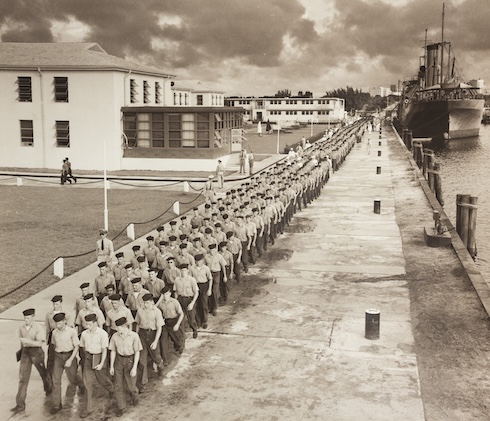
Approximately 25,000 recruits became merchant marines at the St. Petersburg station.
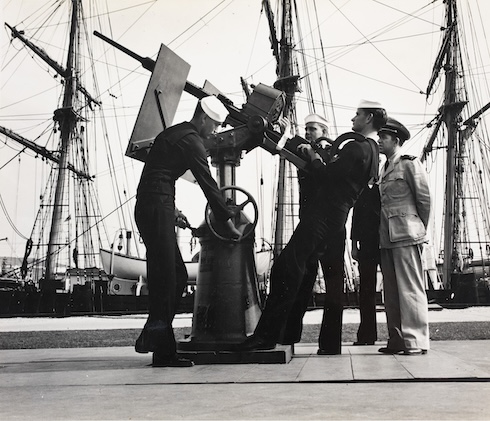
Recruits would learn how to use a gunnery to maintain weapon systems aboard vessels.
The merchant marines were a vital component of the war effort. They provided critical logistical support, transporting troops, fuel and ammunition to combat operations in Europe, North Africa and Southeast Asia, according to the National WWII Museum.
This involved sailing large and often slow-moving ships across both the Atlantic and Pacific Oceans, waters that teemed with German submarines and Japanese ships. It was no surprise that the merchant marines would end up having one of the highest casualty rates among any branch of the military during the war.
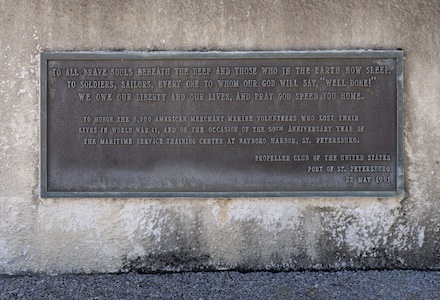
Monument dedicated to the merchant marines.
Their contributions to the war effort were highly valued.
“When final victory is ours, there is no organization that will share its credit more deservedly than the Merchant Marine,” said General Dwight D. Eisenhower, Supreme Allied Commander in Europe during World War II.
That final victory, at least in Europe, came on May 8, 1945. The St. Petersburg training facility stayed in operation for another five years. Its last official act was the lowering of the American flag on April 1, 1950.
Fifteen years later, the station’s barracks, the site of intensive training for those who would serve admirably in World War II, would go on to serve as the first classrooms for USF St. Petersburg.
View more photos of the St. Petersburg Maritime Service Training Station
